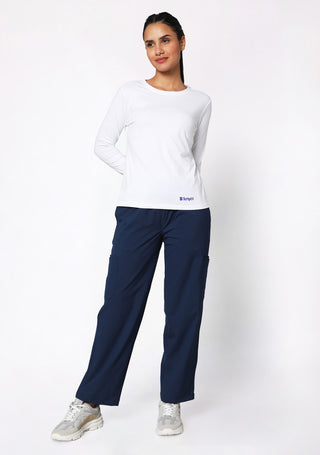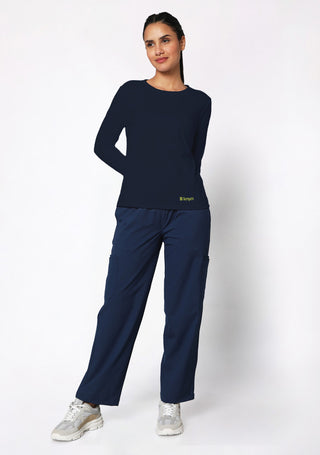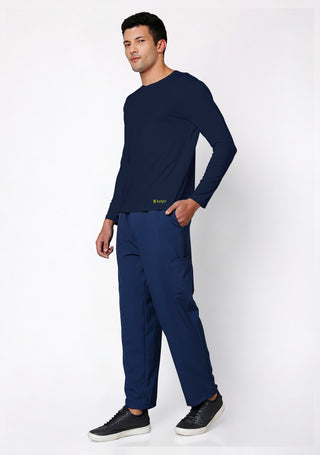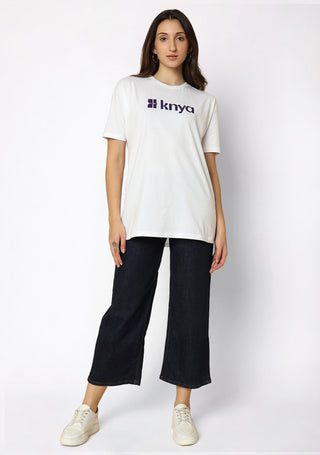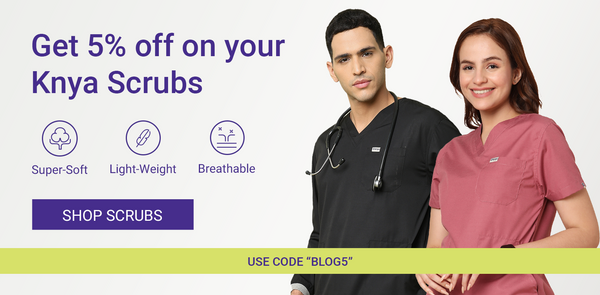Choosing what to wear under scrubs depends on personal preference, workplace requirements, and climate. Whether you opt for full base layers or just a simple tank top, the goal is to feel comfortable and confident throughout your shift.
Healthcare workers and lab professionals already have demanding jobs, and underscrubs shouldn’t add to the stress. By selecting the right materials and fit, you can ensure a hassle-free and comfortable work experience.
The Best Underscrub Options
Undershirts: Short-Sleeved vs. Long-Sleeved
Short-sleeved undershirts are ideal for those who want an extra layer without overheating. They are great for warmer climates and help with comfort while maintaining breathability. Lightweight fabrics like cotton or moisture-wicking synthetics work best.
Long-sleeved undershirts provide more warmth and are useful in cold environments. They should be fitted and made of moisture-wicking material to prevent discomfort. However, some workplaces have hygiene policies that prohibit long sleeves, so it’s best to check dress codes before wearing them.
Leggings vs. Compression Pants vs. Nothing
Leggings are a great option for those who want extra warmth and modesty. Choosing lightweight and breathable fabric prevents overheating while maintaining comfort.
Compression pants are popular among healthcare workers who spend long hours on their feet. They help with circulation and reduce leg swelling. Compression levels vary, with lighter options for general wear and higher compression for additional support.
Some people prefer wearing scrubs without any base layers. This works best in warm climates, provided the scrubs are thick enough to ensure proper coverage. However, transparency issues should always be considered before skipping underscrubs entirely.
For our male healthcare professionals, we offer a wide range of comfortable and stylish scrubs for men, designed to enhance both comfort and professional image
Fabric Choices Matter
The material of your underscrubs plays a huge role in comfort.
Cotton is soft, breathable, and comfortable but absorbs moisture and doesn’t dry quickly. If you sweat a lot, it may not be the best option.
Moisture-wicking synthetic fabrics like polyester, spandex, or nylon blends are lightweight, breathable, and quick-drying. These are great for long shifts as they keep sweat away from the skin.
Merino wool is a good choice for colder climates. It provides warmth, is breathable, and has natural odor-resistant properties.
What NOT to Wear Under Scrubs
Thick or heavy layers can be uncomfortable and restrict movement. Bulky clothing under scrubs is not ideal for busy shifts.
Clothes that show through scrubs, such as bright-colored or patterned undershirts and leggings, can be distracting and unprofessional.
Loose tank tops or oversized undershirts tend to bunch up and shift during long shifts, leading to discomfort. Fitted underscrubs prevent this issue.
Pure cotton undershirts or leggings may not be suitable for people who sweat heavily, as cotton holds moisture and can feel damp after prolonged wear. Moisture-wicking fabrics are a better alternative.
We believe you deserve the best. Shop our amazing selection of lab coats right here
Special Considerations: Different Work Environments
Hospitals and clinics often have strict dress codes. Some facilities don’t allow long sleeves for hygiene reasons, so it’s important to check the workplace policy. Lightweight, breathable underscrubs are the best choice for clinical environments.
Labs and research facilities may have different dress requirements. If a lab coat is worn, additional layering may not be necessary. Long sleeves may be more acceptable in these settings than in hospitals.
In hot and humid climates, lightweight and breathable fabrics are the best choice. Moisture-wicking tank tops can be worn instead of full undershirts to prevent overheating.
In cold climates, layering is essential. Long-sleeved undershirts and leggings provide extra warmth without restricting movement. Merino wool or synthetic base layers work well in low temperatures.
Finding the Perfect Fit
Underscrubs should fit well to ensure comfort throughout the shift.
They should be snug but not too tight, allowing flexibility and easy movement. Seamless or flat-seam designs reduce chafing and irritation. Stretchy fabrics enhance comfort and allow for better mobility.
Can You Make Underscrubs Stylish?
Underscrubs can be both functional and stylish with the right choices.
Neutral colors like black, white, gray, or navy help maintain a professional look. Matching sets of undershirts and leggings create a clean and polished appearance.
Athleisure-style underscrubs with sleek fits enhance comfort and aesthetics. Adding small accessories, like minimalist jewelry, can add personality while maintaining professionalism.





